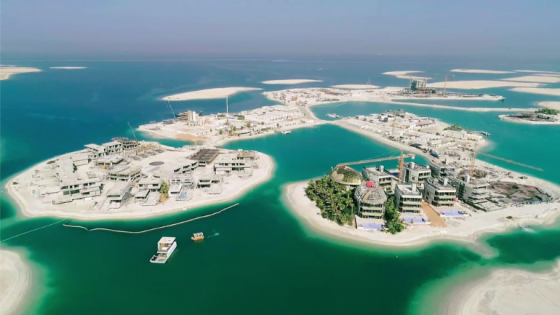Contents
UAE Climate is known for its harsh and unforgiving nature. With hot temperatures, low precipitation, and high humidity, the weather in the United Arab Emirates can be challenging to cope with, especially during the summer. However, with the proper knowledge and preparation, residents and visitors can enjoy all the country has to offer, regardless of the season. This article will provide a comprehensive guide on the UAE climate, its subregions, and how to cope with the heat and humidity.
Understanding UAE Climate
The United Arab Emirates is in a desert climate zone with high temperatures and low precipitation. The climate is hot and arid, with extremely high temperatures in summer and relatively mild temperatures in winter. The country has two main seasons: hot (summer) and cooler (winter).
Summer Season in UAE
The summer season in the UAE is the most challenging for visitors and residents. The temperature is often over 40°C and can reach 50°C during the day. The humidity levels can also be high, making it feel even hotter. Staying hydrated during the summer and avoiding spending too much time outdoors during peak heat hours is essential.
Winter Season in UAE
Winter in the UAE is more pleasant and lasts from November to April. Temperatures are milder, and the average temperature ranges from 18°C to 25°C. It’s the perfect time to explore the country and enjoy outdoor activities.
| Emirate | Climate | Average Temperature (°C) | Annual Rainfall (mm) |
|---|---|---|---|
| Abu Dhabi | Arid desert | 26.7 – 41.6 | 42 |
| Dubai | Arid desert | 24.5 – 37.8 | 115 |
| Sharjah | Arid desert | 26.3 – 40.2 | 120 |
| Ajman | Arid desert | 26.0 – 39.7 | 100 |
| Ras Al Khaimah | Arid desert | 23.6 – 39.8 | 147 |
| Umm Al Quwain | Arid desert | 24.5 – 39.7 | 150 |
| Fujairah | Arid, subtropical climate | 21.7 – 33.3 | 130 |
Subregions of UAE
UAE has seven emirates, each with its unique climate. The UAE climate can vary between the emirates due to geographical location and elevation. Here is a detailed breakdown of each emirate’s climate, temperature, and rainfall:
How to Cope with UAE Climate
Now that we’ve provided you with a comprehensive understanding of the UAE climate and its subregions let’s discuss how to cope with the heat and humidity.
- Stay Hydrated: It’s crucial to stay hydrated during the hot season. Drink plenty of water, avoid sugary drinks, and limit alcohol and caffeine intake.
- Dress Appropriately: Wear lightweight and loose-fitting clothing that covers your skin. Choose light colors that reflect the sun’s heat, and avoid dark colors that absorb heat.
- Stay Indoors: Stay indoors during peak heat hours, usually between 12 pm and 4 pm.
- Use Sun Protection: Apply sunscreen with a high SPF, and wear a hat and sunglasses to protect your skin and eyes from the sun’s harmful UV rays.
- Take Breaks: If you must work outdoors, take frequent breaks and seek shade.
UAE climate change plan
The UAE has taken significant steps toward mitigating the effects of climate change. In 2017, the country launched its National Climate Change Plan, 2017-2050. The plan aims to reduce the country’s carbon footprint by promoting sustainable development and increasing the use of renewable energy.
Conclusion
Living in the UAE means dealing with a unique climate. Still, with the proper preparation, you can enjoy all the country offers. Understanding the environment, its subregions, and how to cope with the heat and humidity is crucial for residents and visitors alike. With these tips, you can enjoy your time in the UAE, regardless of the season.













